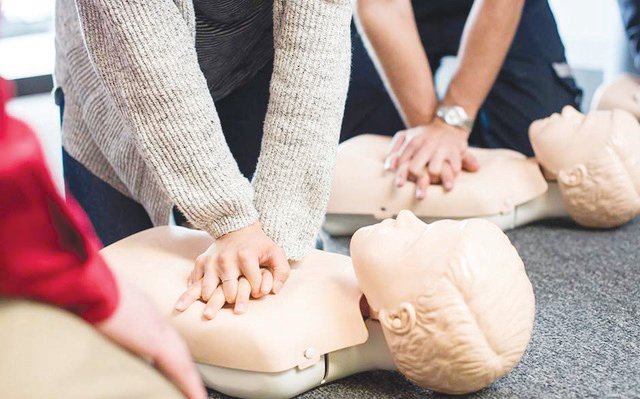County schools to start teaching the ABCs of CPR this year
CLAY COUNTY — Your student will be taught Cardiopulmonary Resuscitation in school after Gov. Ron DeSantis signed a new bill into law last week.The bill requires all high school freshmen and …
This item is available in full to subscribers.
Attention subscribers
To continue reading, you will need to either log in to your subscriber account, below, or purchase a new subscription.
Please log in to continueDon't have an ID?Print subscribersIf you're a print subscriber, but do not yet have an online account, click here to create one. Non-subscribersClick here to see your options for subscribing. Single day passYou also have the option of purchasing 24 hours of access, for $1.00. Click here to purchase a single day pass. |
County schools to start teaching the ABCs of CPR this year
CLAY COUNTY — Your student will be taught Cardiopulmonary Resuscitation in school after Gov. Ron
DeSantis signed a new bill into law last week.
The bill requires all high school freshmen and juniors to learn to administer CPR. The bill also requires school districts to provide the necessary instruction and it heavily encourages districts to push for CPR training in sixth and eighth grades as well.
“The CPR training must be based on a one-hour nationally recognized program that uses the most current evidence-based emergency cardiovascular care guidelines,” the bill reads.
This bill went into on July 1 so your student should be learning CPR this school year. The American Heart Association recommends “Hands Only” CPR, as opposed to a method of rescue breaths – a type of mouth-to-mouth resuscitation famously shown in movies and television shows – because “there is typically enough oxygen in the blood to keep the brain and vital organs alive for up to eight minutes.”
The heart just needs to be stimulated through chest compressions or the use of an Automated External Defibrillator to circulate the oxygenated blood.
“CPR today is very easy to perform and can be learned quickly,” according to the AHA.
It’s so easy, the AHA has free online training videos for Hands-Only CPR and using an AED. AHA offers certified resources for learning how to perform CPR, but as of yet, it’s unclear what route DeSantis wants schools to go in terms of teaching this type of training.
It seems the governor is allowing school districts to decide how to teach CPR. Clay County already has a leg up as it’s been teaching 9th graders CPR for years.
“Clay County District Schools currently offers hands-only CPR training to 9th graders in physical education,” a statement from the district reads. “District and school leaders are collaborating over the next few weeks to find an appropriate time for 11th graders to take part in CPR training, which will be defined before the start of the 2021-22 school year.
“The District is waiting on additional information from the state on programming to meet all the requirements outlined in House Bill 157.”
The District didn’t say whether it will try to teach sixth and eighth-grade students, although the district is known for its proactive nature. At the moment, it will only need to add CPR training for ninth and 11th graders.
The AHA says more than 356,500 sudden cardiac arrests happen each year outside of hospitals, which makes cardiac arrests the third leading cause of death in the United States. More than 300 people experience sudden cardiac arrest in Clay County each year, according to acting Clay County Fire Chief David Motes, and the survival rate nationally for cardiac arrests sits around 10% because only about a third of victims receive bystander CPR, which has the potential to save lives.
“In extremely time-sensitive emergencies like cardiac arrest, having individuals nearby who are trained and willing to do hands-only CPR can sustain life until paramedics arrive,” Motes said. “CPR is easy to do and anyone can learn to perform it correctly. Young people with CPR training will be more likely to stay calm in an emergency and remember that someone needs to dial 911, someone else needs to look for the AED, and that chest compression should be administered at a rate of 100 per minute.
“Training and practice are key to a quick response and the best possible outcome for SCA victims.”
The county says Clay County Fire and Rescue is partnering with PulsePoint so that CPR-trained individuals can be notified of a nearby SCA and take quick life-saving action. The PulsePoint app is free on smartphones, and if you were opt-in for “CPR Needed,” alerts and are within a quarter of a mile of a public cardiac arrest, the app will send you an alert CPR is needed and guide you to the scene, displaying any AEDs on route as well. The app also provides CPR and AED how-to instructions.








